Kingdom of Benin
Use these resources to explore your topic further, both at the Museum and in your classroom.
Gallery Trail
Use this learning resource to explore some of the 500 year old collections from the Kingdom of Benin that are currently displayed at the Horniman.
Using the resource
- Use images of the objects to create a trail through the Museum to find specific objects or places.
- Use images as a stimulus for discussion about the British invasion of Benin City in 1897
- Use object images to encourage independent research, for instance, find out and write down three facts about an object or group of objects. Alternatively, give facts or clues and challenge your pupils to identify mystery objects.
- Take inspiration from the historical artworks, and encourage pupils to draw or model a plaque that tells an important story to them
A note about these objects
Objects 1–7 and 10 are amongst the thousands of sacred and priceless artefacts that were stolen from the Benin Kingdom in 1897 by British soldiers. 72 of these artefacts were bought by Frederick Horniman and held in the Horniman’s collection for over 120 years.
In 2022, they were transferred to Nigeria’s National Commission for Museums and Monuments (NCMM). Most of the objects in this resource are now on loan to our Museum.

Ama (plaque)
Ama (bronze plaques) show important histories of the Benin Kingdom. They are made of metals to ensure that these histories are protected. This Ama shows Ekpenede, the Iyase (Commander-in-Chief) of the Benin army more than 500 years ago. How has the artist made sure that Ekpenede looks powerful?

Ama (Plaque)
This Ama shows a war chief and royal military priest carrying an Ekpokin - a leather gift box. The chief has a rounded lead helmet and scabbard, and the priest has braided hair. What could be in the box?

Pendant
This pendant shows three armoured figures. The person in the middle is supported by people on either side of him. Who might they be? Look for the snake and frogs under their feet. These animals were important symbols of the people (land) and spirits (water).

Ama (plaque)
We believe that the figure in this Ama is an Oba. What clues suggest this? Can you see the details in the background? They include water hyacinths, which are a symbol of the water god, Olokun. What plant would you choose to represent you?
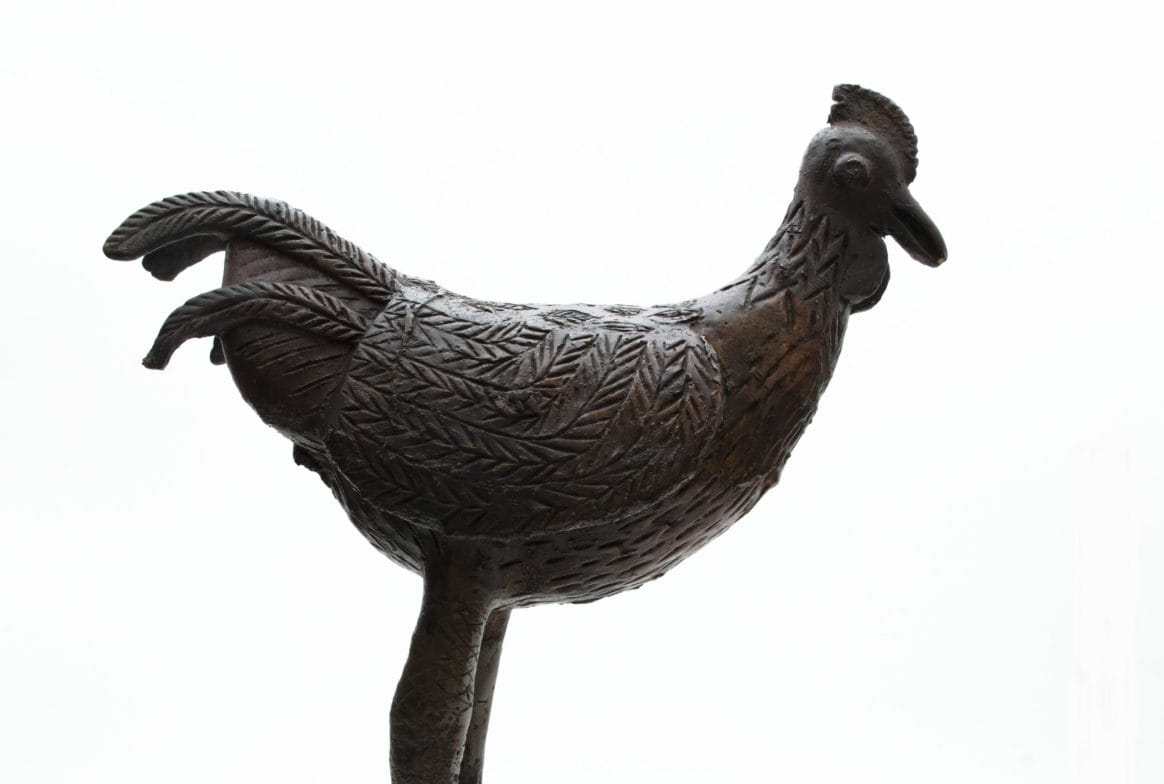
Okporhu (cockerel)
Okporhu are sacred objects, placed on altars to the Iy’Oba (Queen mother). The Iy’Oba was believed to be so powerful, that she was kept apart from her son after he became the Oba. What might this object have meant to this Iy’Oba’s son?
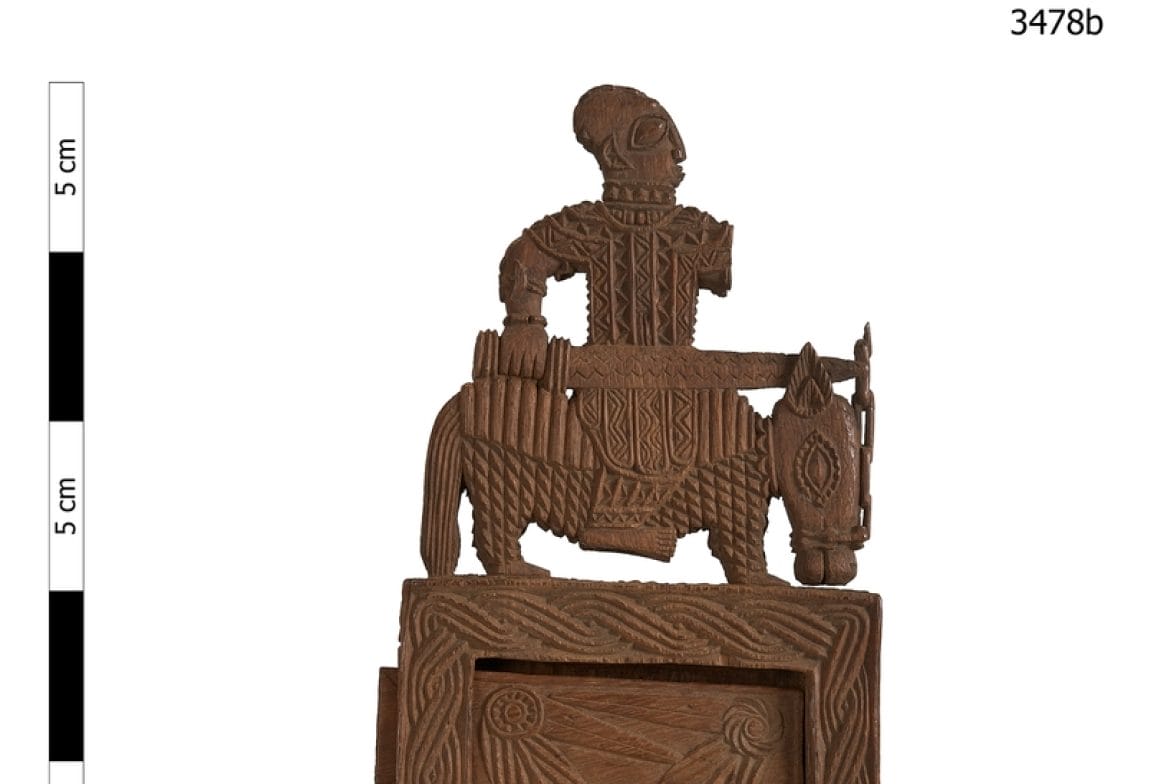
Ughegbe (concealed mirror)
For hundreds of years, guilds in Benin City have created sacred and beautiful objects from metals, wood and ivory, including this hidden mirror. After use, priests covered up these mirrors to prevent spiritual beings from entering our world. Look closely at he detailed carvings; what do they show?
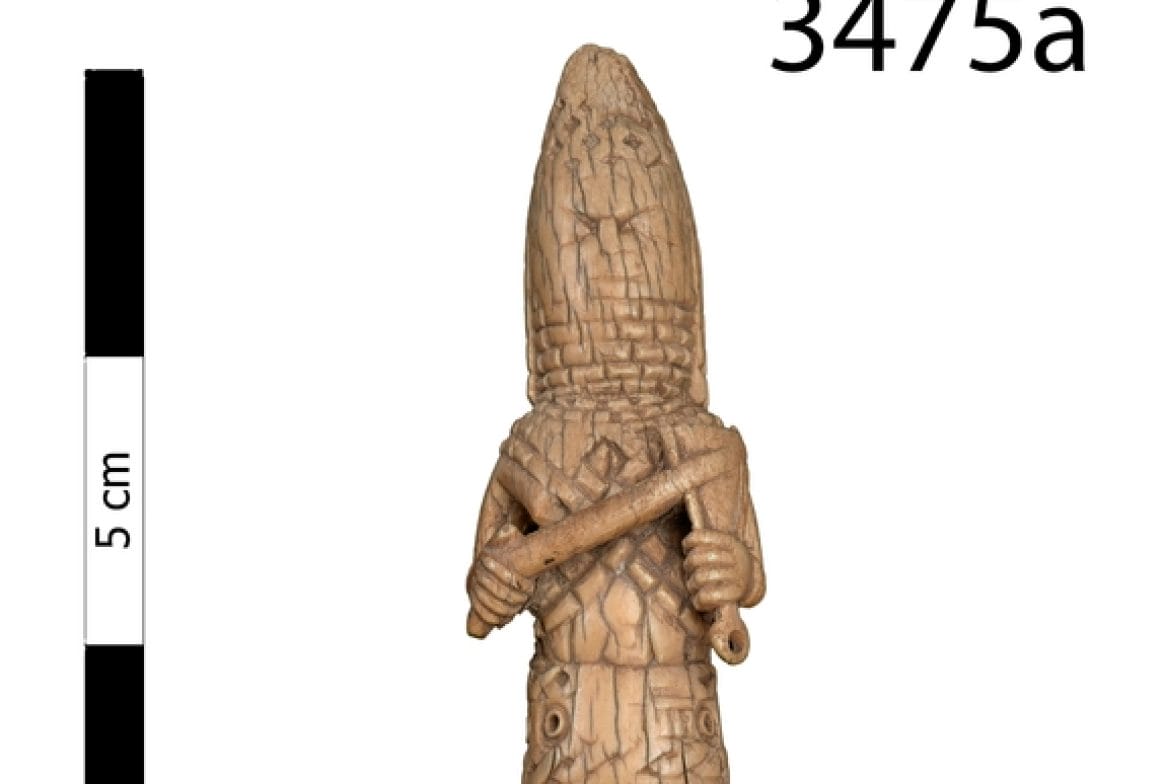
Ivory staff of office
A staff of office is held to identify an important person. The Oba carved on top of this staff is carrying an instrument. The Oba is wearing bands of coral beads to show his importance. Who is an important person in your life?
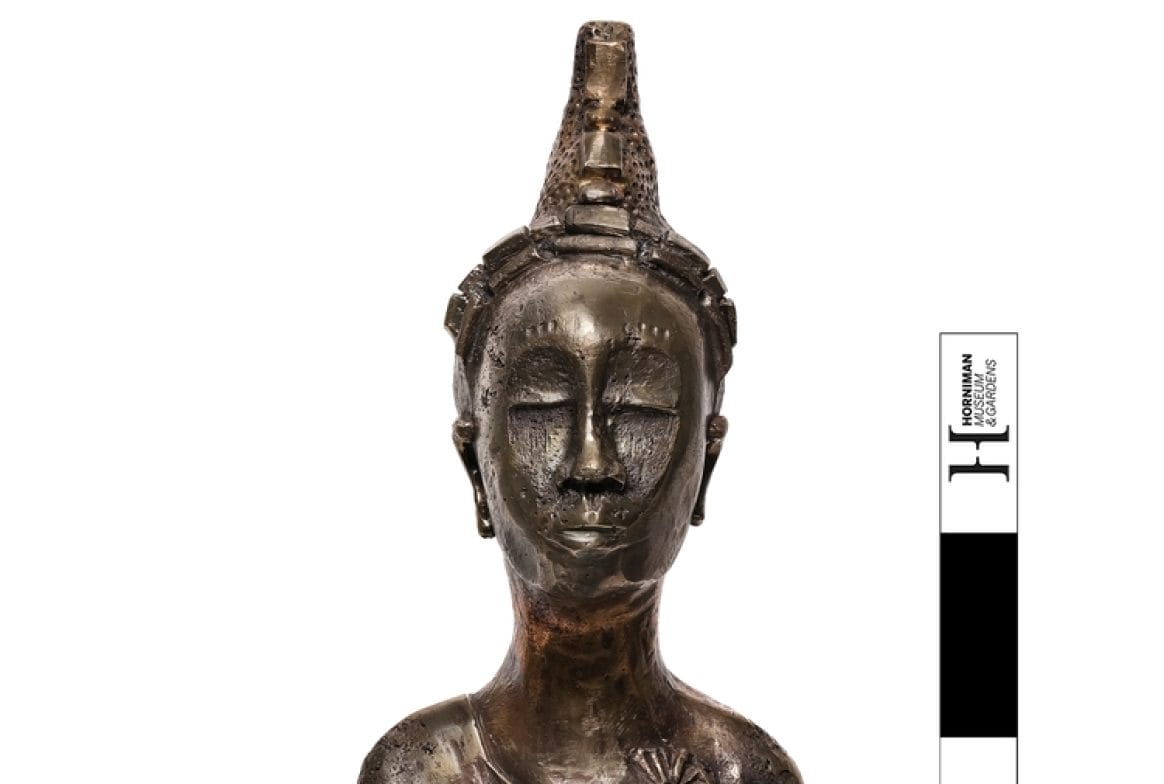
Ame. Oyevbamen 'Like Water'
This statue was made by female Edo artist, Osaru Obaseki in 2024 after visiting the Horniman. It celebrates great Edo women. How is this statue different to the rest of the objects in this display? How does it make you feel?
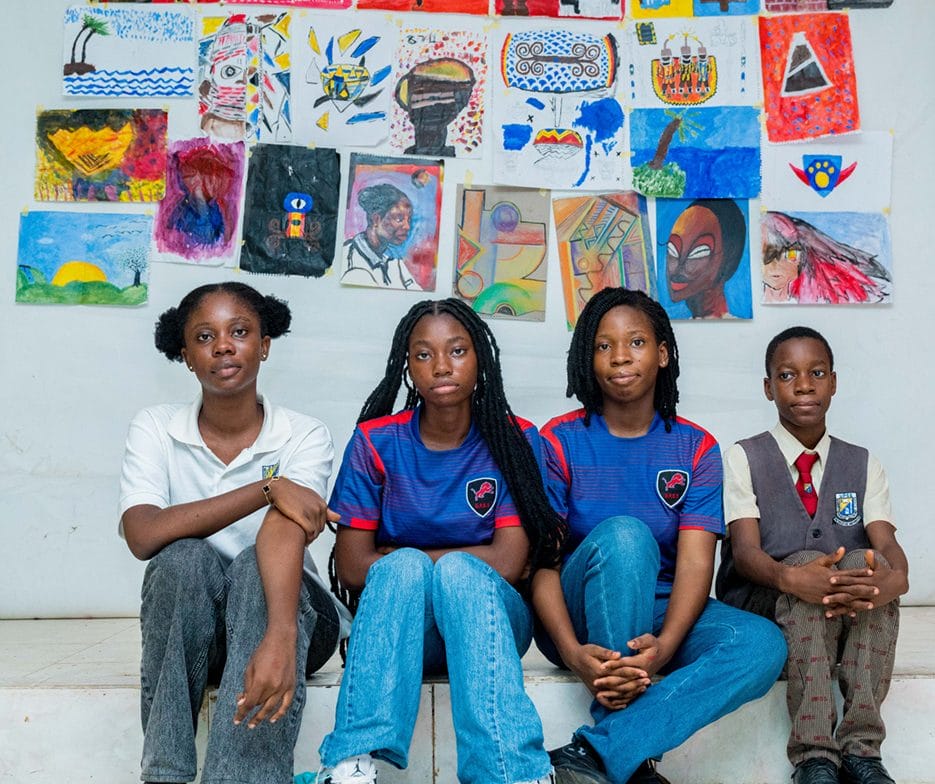
Wallpaper
The wallpaper in this case was designed by school students in Benin City and a Nigerian artist called 12th the Creator. The Horniman Museum and Museum of West African Art worked together with the school and artist. What design would you create to reflect your culture?

Eroro (clapper bell)
This Eroro was cast from bronze in Benin City and is about 200 hundred years old. Bells like this were placed on shrines and rung to call ancestral spirits. Look for another ancestral object in the Music Gallery nearby. What can you learn about it?










